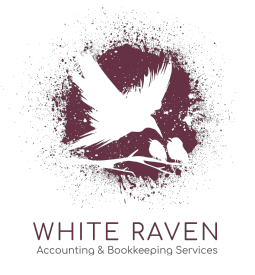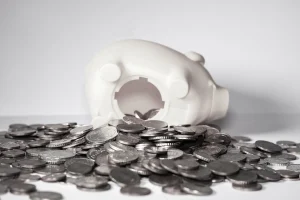What Is An RRSP?
An RRSP is a type of savings account that helps you save money for your retirement. It’s like a piggy bank that the government helps you with, and it comes with some tax benefits.
When you put money into an RRSP, you can reduce the amount of taxes you have to pay. The money you put into an RRSP grows tax-free, which means that you don’t have to pay any taxes on the money your RRSP makes.
The only thing is that you can’t take the money out of your RRSP until you retire. When you do decide to take money out, you’ll have to pay taxes on it at your normal tax rate.
Overall, an RRSP is a great way to save for your future while also getting some tax breaks from the government.
How RRSPs Work
RRSPs work by allowing you to save money for your retirement in a tax-advantaged way. When you contribute to an RRSP, the amount you contribute can be deducted from your taxable income. This means you’ll pay less tax on the money you earn this year.
For example, let’s say you earned $50,000 in a year and you contributed $5,000 to your RRSP. When you file your taxes, you can deduct that $5,000 from your taxable income, so you’ll only be taxed on $45,000 instead of $50,000. This can make a significantly positive impact on your tax return.
The money you contribute to your RRSP can be invested in a variety of different types of assets, such as stocks, bonds, and mutual funds. The money in your RRSP will grow tax-free until you decide to withdraw it.
It’s important to note that there are limits on how much you can contribute to your RRSP each year. The contribution limit is based on a percentage of your income, and it changes each year. The current limit is 18% of your previous year’s earned income, up to a maximum of $30,780.
If you don’t use up your full contribution limit in a given year, you can carry forward any unused contribution room to future years. This means you can contribute more to your RRSP in the future and get more tax benefits.
Overall, RRSPs work by allowing you to save for your retirement in a tax-efficient way. By contributing to an RRSP, you can reduce your taxes now and save for your future at the same time.
Benefits of Contributing to an RRSP
Contributing to an RRSP account has several benefits that can help you save for retirement and reduce your tax burden. Here are some of the key advantages of making RRSP contributions:
Tax Deductions:
One of the main benefits of contributing to an RRSP is the tax deduction you can receive. When you make an RRSP contribution, you can deduct the amount from your taxable income, which can lower the amount of taxes you owe. This can be especially beneficial if you’re in a higher tax bracket and want to reduce your tax bill.
Tax-Free Growth:
Another advantage of RRSPs is that your investments grow tax-free inside the account. This means that you won’t have to pay taxes on the gains or interest earned on your investments until you withdraw the money from your RRSP. This can help your savings grow faster over time.
Retirement Income:
RRSPs are designed to provide retirement income, so when you eventually withdraw money from your RRSP, it will be taxed as income. However, if you’re in a lower tax bracket during retirement than you were during your working years, you could end up paying less in taxes overall.
Flexibility:
RRSPs offer some flexibility in terms of how and when you can make contributions. You can contribute up to your allowable limit each year, but if you don’t have the money to contribute one year, you can carry forward your contribution room to future years. Additionally, you can withdraw funds from your RRSP early for certain purposes, such as the Home Buyers’ Plan or Lifelong Learning Plan, without paying a penalty.
By taking advantage of these benefits, you can use an RRSP account to help you save for retirement and reduce your tax bill.
RRSP Contribution Limits
There are limits to how much you can contribute to your RRSP account. The contribution limit for the year is based on your income from the previous year, and the government sets a maximum contribution limit for all taxpayers.
The contribution limit for 2024 is 18% of your earned income from the previous year, up to a maximum of $30,780. However, if you did not use your full contribution limit in previous years, you can carry forward the unused amount to future years. The amount you can carry forward is shown on your notice of assessment from the Canada Revenue Agency.
It’s important to note that contributing more than the allowed limit can result in penalties and taxes, so be sure to keep track of your contributions and consult with a financial advisor if you have any questions about the limit.
Should I get an RRSP?
Whether or not you should get an RRSP depends on your personal financial goals and circumstances. Generally, if you have a stable income and want to save for retirement, an RRSP can be a good option.
An RRSP allows you to contribute pre-tax dollars, meaning you can lower your taxable income and potentially save money on taxes. The funds in your RRSP account can then grow tax-free until you withdraw them in retirement when your income is likely to be lower than it is during your working years.
However, if you have high-interest debt, such as credit card debt, it’s often recommended that you pay down that debt first before contributing to an RRSP. This is because the high interest on debt can quickly offset any potential gains from an RRSP.
It’s also important to consider other factors such as your age, retirement goals, and investment strategy before deciding to open an RRSP account. It’s always a good idea to speak with a financial advisor who can help you assess your individual situation and make a plan that’s right for you.
How to use RRSP to save money
One of the biggest advantages of RRSP accounts is the potential tax savings. By contributing to an RRSP account, you can lower your taxable income and potentially save money on taxes.
To use your RRSP to save money on taxes, you’ll need to make sure you’re contributing within the contribution limits. The contribution limit is typically 18% of your previous year’s earned income, up to a certain maximum amount, which is adjusted annually for inflation.
Once you’ve determined your contribution limit, you can make contributions to your RRSP account throughout the year, up to the contribution deadline of March 1st of the following year.
When you file your taxes, you’ll receive a tax receipt for your RRSP contributions, which you can then use to claim a deduction on your tax return. This deduction will reduce your taxable income, potentially resulting in a lower tax bill.
Keep in mind that while contributing to an RRSP can save you money on taxes in the short term, you will eventually have to pay taxes on the funds when you withdraw them in retirement. However, if you withdraw the funds in retirement when your income is lower, you may pay less in taxes overall. It’s important to consult with a financial advisor to determine the best strategy for your individual situation
RRSP Withdrawals
RRSP accounts are designed to be used for retirement savings, but there are some circumstances in which you may be able to withdraw funds from your RRSP account before retirement.
Home Buyers’ Plan (HBP)
One option is the Home Buyers’ Plan (HBP), which allows first-time homebuyers to withdraw up to $35,000 from their RRSP account to use towards a down payment on a home. The amount must be repaid within a period of 15 years, or it will be subject to taxes.
Lifelong Learning Plan (LLP)
Another option is the Lifelong Learning Plan (LLP), which allows you to withdraw up to $20,000 from your RRSP account to fund your education or training, with a maximum of $10,000 per year.
Withdrawal Taxes on RRSP Accounts
If you make an early withdrawal from your RRSP account before reaching maturity at age 71, you will be subject to paying withholding tax in addition to income tax.
The withholding tax rate varies for Canadians outside of Quebec, and is:
10% on amounts up to $5,000
20% on amounts between $5,000 and $15,000
30% on amounts exceeding $15,000
For instance, if you withdraw $20,000 from your RRSP account at age 45, you would need to pay $4,000 of withholding tax on the withdrawal.
Calculation of RRSP Withholding Tax
When you withdraw funds from your RRSP account, your financial institution will issue a T4RSP form indicating the amount withdrawn and the tax amount withheld.
You must report the withdrawal amount on your personal tax return for the year in which the funds were withdrawn.
The positive aspect is that withholding tax is treated the same as regular income tax. Therefore, if you overpaid your tax, you will be refunded for the amount of the excess tax paid.
Last Words
Contributing to an RRSP can be a smart move for retirement planning if done right. It can help you grow your savings tax-free until you retire, and potentially provide a higher income in retirement.
However, it’s essential to address high-interest debt before contributing to an RRSP since the interest on your debt may be higher than the returns you could earn from an RRSP.
Additionally, it’s crucial to consider your income level and tax bracket carefully. If you’re in a lower tax bracket, contributing to a Tax-Free Savings Account (TFSA) may be more advantageous than an RRSP.
Overall, an RRSP can be a valuable tool for building your retirement savings, but it’s important to approach it strategically and with careful consideration of your financial situation.
Subscribe to our newsletter either to the right or below to stay up to date with the latest financial information and to learn more about taxes, accounting, and bookkeeping!








